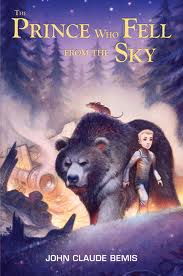July Theme: What Fireworks Can Teach About Revising by John Claude Bemis
This 4th of July weekend has me naturally
thinking about fireworks. A great
fireworks display is not about just shooting a bunch of booming pyrotechnics up
in the sky. There’s an art and a craft
to putting on a good show. It’s not
about quantity or volume or size of the rocketing spirals of color. A memorable fireworks display finds a perfect
rhythm. It begins with some teasing—a few
opening shots that catch our attention.
Then it’s about the pace and variety—building into interesting formations,
occasionally ebbing before shooting off just the right firework to create “wow”
moments. Finally it crescendos into the
grand finale that leaves your mouth open and your heart racing.
A great story should be crafted this way as well. The best time to focus on creating the most
captivating pace for a novel is during the revision stage. When my editor, the amazing Jim Thomas at
Random House, and I were toiling through the revisions for my latest novel THE
PRINCE WHO FELL FROM THE SKY, we worked hard to tighten the book into the kind
of story you can’t stop reading once you start.
It required a hard look at the structure of the novel and a willingness
to “kill your darlings” when necessary.
First we whittled the opening scenes into a captivating
teaser. Casseomae the bear is introduced
as a lonely outcast among the forest animals of this future post-apocalyptic
world where humans have long ago disappeared.
We wanted to get the story moving as fast as possible, but not at the
expense of getting readers emotionally invested in Casseomae. When a spaceship crashes in the forest and
Casseomae makes the difficult choice to protect the lone survivor—a boy who as
a human is instinctively feared and hated by the wolves and other forest tribes—the
story takes off.
To get the right pace, we had to move entire scenes
around. The dog Pang was introduced a
little later in the story to deepen the motivations of the primary characters
of the bear Casseomae and her human cub.
A visit to a brood of soothsayer vultures was brought up sooner in the
story to develop the growing mystery around why humans have disappeared and
whether they are returning. We charted
this all out, moving scenes to just the right spots in order to find a riveting
flow to the story and character arcs, and often chopping out scenes that didn’t
further the story.
For the grand finale— the end of the story where a showdown
occurs with the pack of wolves hunting the heroes and when the human cub must
ultimately decide if he will remain with his adopted mother Casseomae or return
to his own kind—Jim and I rewrote (yes, my editor took an active role in
rewriting some key parts), tweaked, and revised to give the story its climactic
punch. We wanted that “wow” moment that
would hopefully leave readers with mouths open and hearts racing. And from what I’ve heard from readers and
reviewers, I think our hard work paid off.
The final aspect to revisions that Jim and I did to get the
tightest, most thrilling story we could achieve was to edit out every
unnecessary word. Like I said, a great
fireworks show is not about quantity. It’s
not “let’s pack this performance with as many fireworks as possible.” That can be exhausting—for both fireworks and
storytelling—and can ultimately bore the audience by overwhelming them. I had never line edited a novel to this
degree! It was tedious work, weighing
each scene, paragraph, and sentence to take out anything and everything
unnecessary. But it was also worth it.
Writers often are emotionally tired by the time they get to
the revision stage of a novel, but this is the time to brew up that coffee and
turn up the brutally judgmental side of our brains to rework the entire story. Only then can you achieve a display of storytelling
pyrotechnic wonders that will hopefully leave readers gasping “wow!”

Great post, John. I am still re-writing and have moved many scenes around. Thanks, Cat
ReplyDeleteKeep at it, Cat! Can't wait to see how the story is getting re-worked.
ReplyDeleteI so love how you link the pacing of a novel to the pacing of any good performance...so true!
ReplyDelete